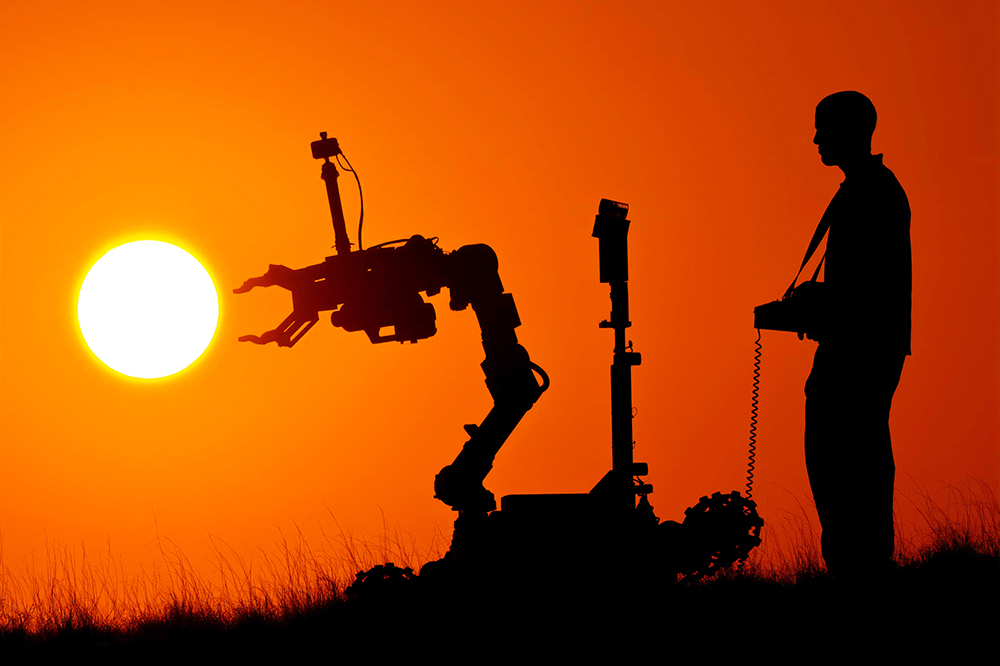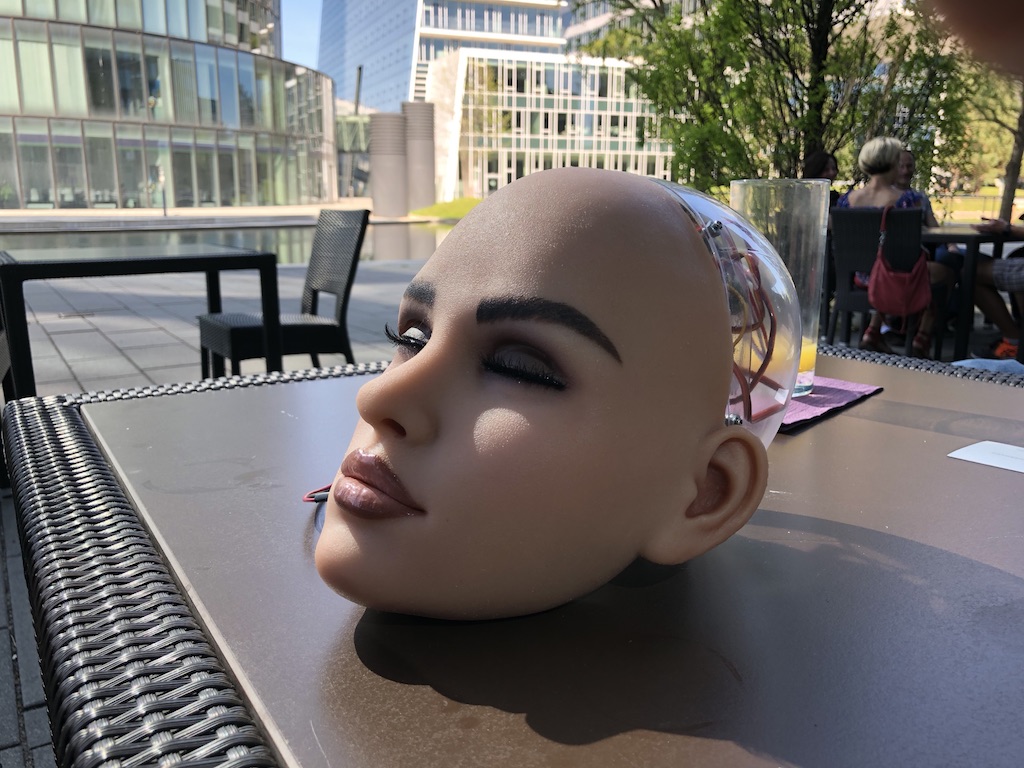“Once we place so-called ‘social robots’ into the social practices of our everyday lives and lifeworlds, we create complex, and possibly irreversible, interventions in the physical and semantic spaces of human culture and sociality. The long-term socio-cultural consequences of these interventions is currently impossible to gauge.” (Website Robophilosophy Conference) With these words the next Robophilosophy conference was announced. It would have taken place in Aarhus, Denmark, from 18 to 21 August 2019, but due to the COVID 19 pandemic it is being conducted online. One lecture will be given by Oliver Bendel. The abstract of the paper “The Morality Menu Project” states: “Machine ethics produces moral machines. The machine morality is usually fixed. Another approach is the morality menu (MOME). With this, owners or users transfer their own morality onto the machine, for example a social robot. The machine acts in the same way as they would act, in detail. A team at the School of Business FHNW implemented a MOME for the MOBO chatbot. In this article, the author introduces the idea of the MOME, presents the MOBO-MOME project and discusses advantages and disadvantages of such an approach. It turns out that a morality menu can be a valuable extension for certain moral machines.” In 2018 Hiroshi Ishiguro, Guy Standing, Catelijne Muller, Joanna Bryson, and Oliver Bendel had been keynote speakers. In 2020, Catrin Misselhorn, Selma Sabanovic, and Shannon Vallor will be presenting. More information via conferences.au.dk/robo-philosophy/.
Show Me Your Hands
Fujitsu has developed an artificial intelligence system that could ensure healthcare, hotel and food industry workers scrub their hands properly. This could support the fight against the COVID-19 pandemic. “The AI, which can recognize complex hand movements and can even detect when people aren’t using soap, was under development before the coronavirus outbreak for Japanese companies implementing stricter hygiene regulations … It is based on crime surveillance technology that can detect suspicious body movements.” (Reuters, 19 June 2020) Genta Suzuki, a senior researcher at the Japanese information technology company, told the news agency that the AI can’t identify people from their hands, but it could be coupled with identity recognition technology so companies could keep track of employees’ washing habits. Maybe in the future it won’t be our parents who will show us how to wash ourselves properly, but robots and AI systems. Or they save themselves this detour and clean us directly.
Machine Love
The book “Maschinenliebe” (“Machine Love”/”Machines of Love”/”Machines for Love”/”Love for Machines”), edited by Oliver Bendel, has gone into production. The subtitle is “Liebespuppen und Sexroboter aus technischer, psychologischer und philosophischer Perspektive” (“Love Dolls and Sex Robots from a Technical, Psychological and Philosophical Perspective”). The volume contains contributions by internationally renowned experts as well as interviews with a love doll brothel operator and a sex worker. It has about 200 pages and some color illustrations. Three of the 16 contributions are in English. They come from internationally renowned experts in this field, from Kate Devlin (King’s College London), Yuefang Zhou and Martin H. Fischer (University of Potsdam), and Kino Coursey (Realbotix; picture by courtesy of this company). The book will be published in autumn 2020. Further information is available at www.springer.com/de/book/9783658298630.
IBM will Stop Developing or Selling Facial Recognition Technology
IBM will stop developing or selling facial recognition software due to concerns the technology is used to support racism. This was reported by MIT Technology Review on 9 June 2020. In a letter to Congress, IBM’s CEO Arvind Krishna wrote: “IBM firmly opposes and will not condone uses of any technology, including facial recognition technology offered by other vendors, for mass surveillance, racial profiling, violations of basic human rights and freedoms, or any purpose which is not consistent with our values and Principles of Trust and Transparency. We believe now is the time to begin a national dialogue on whether and how facial recognition technology should be employed by domestic law enforcement agencies.” (Letter to Congress, 8 June 2020) The extraordinary letter “also called for new federal rules to crack down on police misconduct, and more training and education for in-demand skills to improve economic opportunities for people of color” (MIT Technology Review, 9 June 2020). A talk at Stanford University in 2018 warned against the return of physiognomy in connection with face recognition. The paper is available here.
Robot Performs COVID-19 Tests
The COVID-19 pandemic has given a boost to service robotics. Transport, safety and care robots are in demand, as are cleaning and disinfection robots. Service robots measure the temperature of passengers at airports and railway stations. Now they can also perform COVID-19 tests. “Robotics researchers from the University of Southern Denmark have developed the world’s first fully automatic robot capable of carrying out throat swabs for Covid-19, so that healthcare professionals are not exposed to the risk of infection. The prototype has successfully performed throat swabs on several people. The scientists behind are cheering: The technology works!” (Website SDU, 27 May 2020) A robot arm as known from the industry was used. The end piece comes from the 3D printer. This is another example from the health sector that shows how industrial robots – such as cobots – can become service robots. More information via www.sdu.dk/en/nyheder/forskningsnyheder/robot-kan-pode-patienter-for-covid-19.
An Insect-size Microrobot
In their paper “Scaling down an insect-size microrobot, HAMR-VI into HAMR-Jr”, Kaushik Jayaram (Harvard Microrobotics Lab) and his co-authors present HAMR-Jr, a 22.5 mm, 320 mg quadrupedal microrobot. “With eight independently actuated degrees of freedom, HAMR-Jr is … the most mechanically dexterous legged robot at its scale and is capable of high-speed locomotion … at a variety of stride frequencies … using multiple gaits.” (Abstract) The scientists achieved this “using a design and fabrication process that is flexible, allowing scaling with minimum changes to our workflow”. They “further characterized HAMR-Jr’s open-loop locomotion and compared it with the larger scale HAMR-VI microrobot to demonstrate the effectiveness of scaling laws in predicting running performance” (Abstract) . The work is partially funded by the DARPA SHort Range Independent Microrobotic Platforms and the Department of Defense (DoD) through the National Defense Science & Engineering Graduate (NDSEG) Fellowship Program. There is no doubt that the military is interested in miniature robots that are as big as cockroaches. They are certainly just as interested in animal cyborgs that use cockroaches as the commercial RoboRoach. At least no animals will be harmed in the scientific project. The paper is available here.





